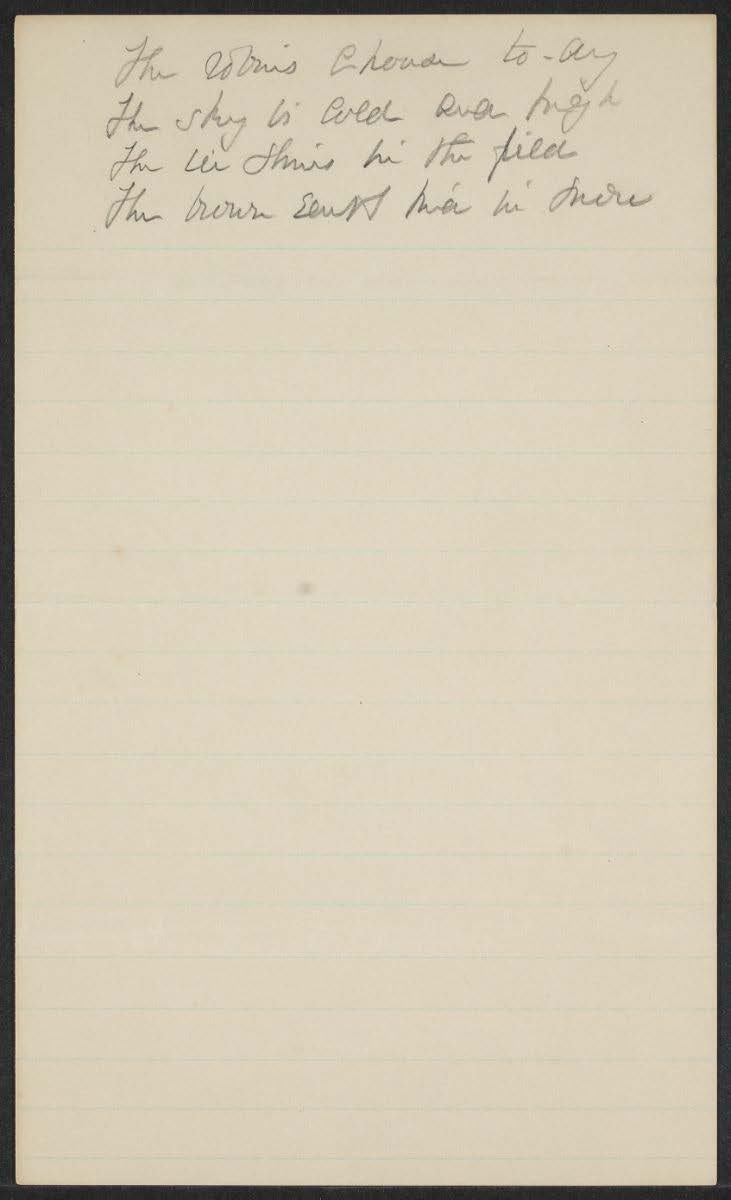<< Return to Poems
The robins choose to-day
< transcription >
NOTES
H bMS Am 1118.95, Box 9
Fragment. Late 1880's? Handwriting similar to "Of June, and her belongings". Pencil. First leaf, first page of blue-ruled paper embossed "DOLPHIN". "One asked, when was the grief?" is on the same sheet, fourth page.
May be connected to Valentine's Day as an abandoned variant beginning or the start of a separate poem written around the same time; the repetition of "robins" singing "today, today we choose our mate" combined with the austere description of the winter landscape argue strongly in favor of its kinship with "Valentine's Day". In any case, it seems to testify to a poetic process (also evident in "Irony" and "What offering have I dear Lord...", where both script and typescript versions exist) through which Susan formalizes her poetry, even translates her poetry from ms. with print and its prosody rules in mind. Note in particular that the fragment is composed without conventions of fixed end-rhyme, punctuation, elevated diction, alliteration, and popular conceit.
This less decorated, simple prose-like language, so rare for the nineteenth century, is almost shocking in its anticipation of modern poetry. Though Susan forsakes this fragment for whatever reason(s), it marks what appears to be the beginning of a prosaic shift in her poetry, where the more natural voice of her prose (see her autobiographical Annals of the Evergreens) begins to suffuse her poetry with moments of astonishing subtlety and grace. In particular, note that, instead of her usual modifying, phrasal units which continue for several lines without a determinate verb, Susan uses the sentence as the unit of her line in three of the four, as in "The ice shines in the field" compared with "When fast in rigid thews of ice," of "Valentine's Day".
Written in loose iambic trimeter and using only internal rhyme and assonance, the fragment is forced to rely on the strength of its syntactical parts, an integrity of line and logic that Susan struggles with in other poems. It may be that she begins to resolve tension between her own poetic voice and talent and the very different influences offered by Emily and contemporary hero-poets, such as Tennyson.
Among the very few analogs for this fragment is the collaborative work of the English couple, Katherine Bradley and Edith Cooper, who printed under the pseudonym Michael Field (Long Ago, 1889). Though their volumes were widely disseminated and celebrated by their contemporaries (Robert Browning was a great supporter), Susan may or may not have been familiar with their work. Perhaps more than anything, the fragment and its few contemporary analogs testify to the overwhelming influence of Victorian codes and laws on all modes of expression.




